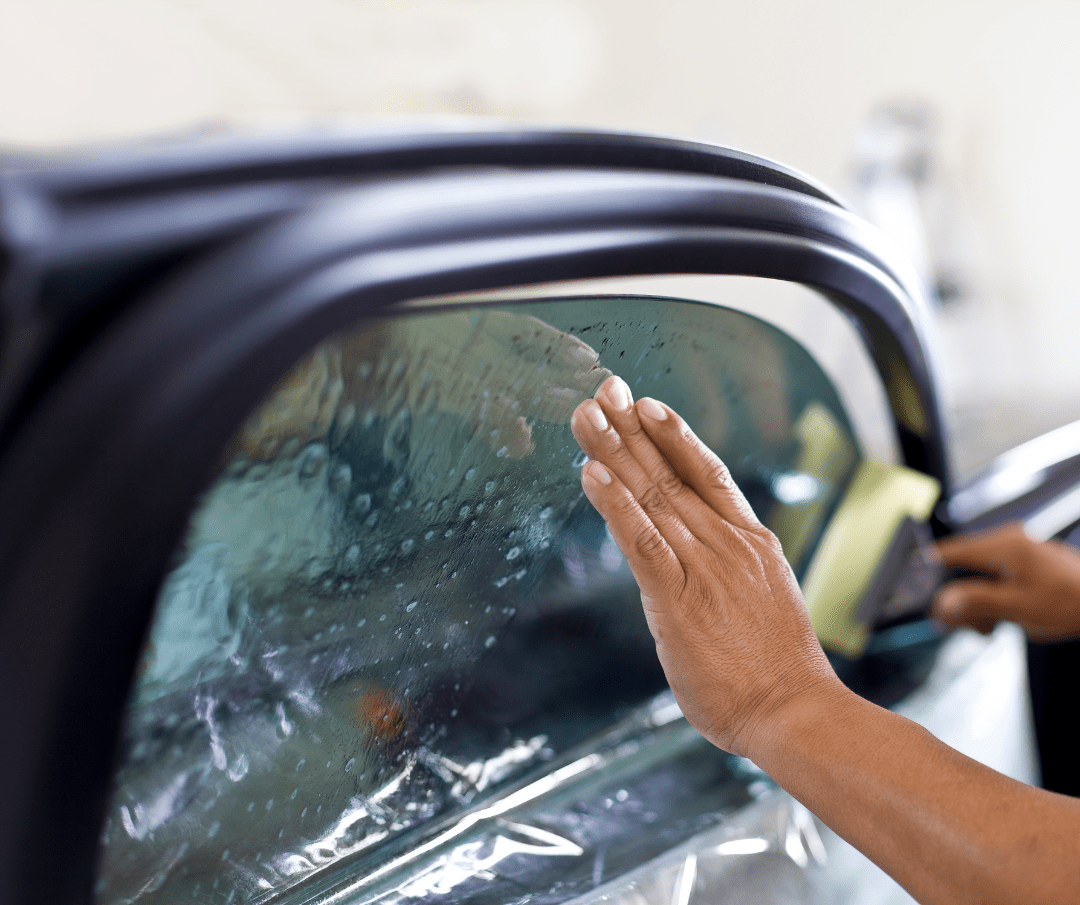Understanding the Various Kinds Of Auto Window Tinting: Which One Is Right for You?
The choice of car window tinting can dramatically influence both the functionality and looks of your automobile. With various options readily available, such as dyed, metalized, ceramic, and crossbreed colors, each presents distinctive benefits customized to particular requirements and preferences. Comprehending these differences is vital for making an informed option that straightens with your lifestyle and budget. As you consider the effects of each kind, it asks the concern: which variables will eventually lead your decision in this multifaceted landscape?
Overview of Automobile Window Tinting
The key function of window tinting is to reduce glow and heat from the sunlight, which can lead to a much more comfortable driving experience. Additionally, tinted home windows help secure the interior of the car from harmful UV rays, minimizing the risk of fading and deterioration of furniture and dashboard products.
Furthermore, window tinting can boost privacy and safety and security. Tinted home windows can prevent possible thieves by making it more difficult to see prized possessions left inside the car. In addition, in case of a crash, colored movies can hold destroyed glass together, decreasing the risk of injury from flying fragments. While numerous elements, such as neighborhood laws and regulations, may affect the degree of tinting permitted, the need for this personalization continues to grow. Eventually, car home window tinting acts as a multifunctional improvement that incorporates design with safety, making it a deserving consideration for vehicle proprietors looking for to enhance their driving experience.
Sorts Of Window Tinting
Exploring the various kinds of window tinting exposes a variety of choices tailored to meet different needs and choices. One of the most typical types consist of colored, metalized, ceramic, and crossbreed tints.
Colored window tint entails a layer of dye related to the movie, providing a sleek appearance and lowering glow. While it effectively obstructs UV rays, it may not offer the same degree of heat denial as other types.
Metalized home window tint incorporates little metal fragments that reflect heat and UV rays. This type enhances resilience and includes strength to the glass but can conflict with electronic signals, such as general practitioner and cellular phone reception.
Ceramic window color is a costs alternative that utilizes advanced technology to provide superior warm denial and UV protection without the downsides of metal disturbance. It keeps presence while offering a high degree of convenience.
Crossbreed tint integrates dyed and metalized aspects, providing a well balanced service that supplies both visual allure and performance. Each type has one-of-a-kind characteristics that affect elements like look, warmth denial, and signal interference, enabling consumers to choose based upon certain needs and choices.
Benefits of Each Tint Kind

Metalized window tint, on the various other hand, boosts durability and warm rejection. The metal particles embedded in the film mirror warmth and UV rays, therefore keeping a check these guys out cooler interior and shielding furniture from fading. This type additionally includes an extra layer of personal privacy due to its reflective buildings.
Ceramic home window color is acclaimed for its remarkable efficiency. It blocks as much as 99% of UV rays and significantly lowers warm without hindering digital signals, making it suitable for modern-day vehicles geared up with advanced technology. It has a tendency to be more expensive, its durability and effectiveness often warrant the financial investment.
Elements to Consider
When picking the suitable home window tint for a vehicle, several essential factors enter play that can dramatically influence the decision. Firstly, the legal policies relating to window tinting vary by state and locality. Comprehending these laws is necessary to avoid potential penalties and make sure compliance with neighborhood requirements.
An additional important consideration is the level of warmth and UV defense desired. Different tint types offer varying levels of warmth denial and UV security, impacting both convenience and the longevity of the vehicle's inside. In addition, one should take into consideration the visual charm of the tint, as some alternatives may boost the car's look while others might interfere with it.

Making Your Choice
After taking into consideration the different factors involved in choosing navigate to this website the right home window tint, the decision-making process can begin. Beginning by reviewing your main goals for tinting. Whether your emphasis is on UV protection, warmth reduction, personal privacy, or visual appeals will significantly affect your option.
Next, examine the legal constraints in your area relating to home window tint darkness and reflectivity (Chavez Auto Detailing Window Tinting). Compliance with local regulations is essential to avoid fines and ensure security

Additionally, take into consideration the longevity and warranty of the product. Purchasing a higher-quality movie might at first cost even find this more but can conserve money in time with longevity and decreased need for replacement.
Final Thought
In final thought, selecting the appropriate type of car home window tinting demands cautious consideration of individual demands and choices. Each tint kind-- colored, metalized, ceramic, and hybrid-- provides distinct benefits, ranging from cost-effectiveness to improved sturdiness and UV security.
Each type of home window tinting deals distinct benefits that provide to differing choices and requirements. Dyed home window color is popular for its visual allure, providing a smooth look while decreasing glare and blocking damaging UV rays.Metalized window tint, on the various other hand, boosts toughness and heat being rejected.When selecting the appropriate window color for a lorry, several vital aspects come right into play that can considerably affect the last choice.In conclusion, selecting the appropriate type of automobile window tinting necessitates cautious consideration of individual requirements and preferences.